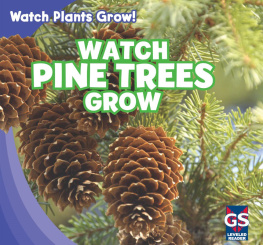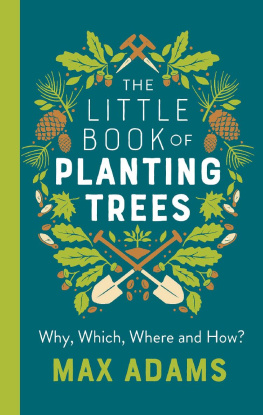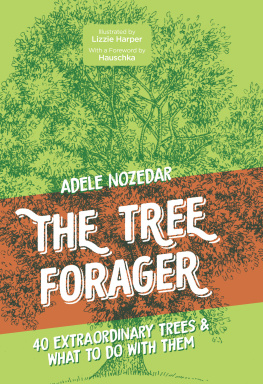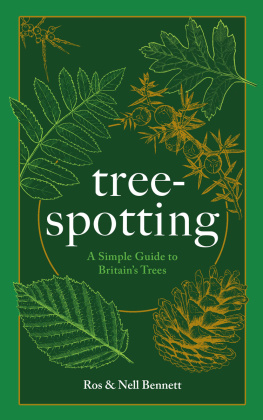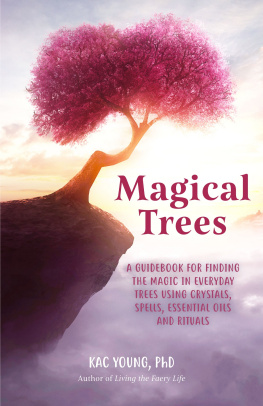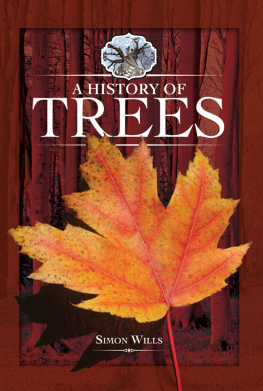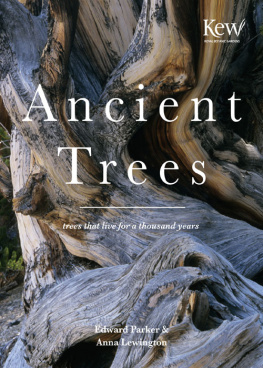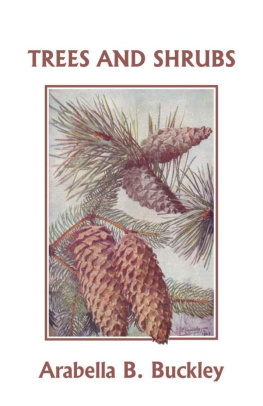
Winged fruits (samaras) of boxelder (Acer negundo) hang in long, narrow clusters and often persist into the winter.

In addition to showy flowers and long, bean-like pods, northern catalpa (Catalpa speciosa) is notable for its large, lime-green leaves and shapely flower buds.
Seeing Trees
Discover the extraordinary secrets of everyday trees
NANCY ROSS HUGO
Photography by
ROBERT LLEWELLYN

Copyright 2011 by Nancy Ross Hugo and Robert Llewellyn. All rights reserved.
Information on sweetgum flowering, holly leaf miner, and red maple flowering from Teaching the Trees: Lessons from the Forest by Joan Maloof (University of Georgia Press, 2005) is reprinted by permission of the publisher.
Published in 2011 by Timber Press, Inc.
The Haseltine Building
133 S.W. Second Avenue, Suite 450
Portland, Oregon 97204-3527
www.timberpress.com
2 The Quadrant 135
Salusbury Road
London NW6 6RJ
www.timberpress.co.uk
Printed in China
Library of Congress Cataloging-in-Publication Data
Seeing trees: discover the extraordinary secrets of everyday trees / by Nancy Ross Hugo; photography by Robert Llewellyn1st ed.
p. cm.
Includes bibliographical references and index.
ISBN 978-1-60469-219-8
1. Trees Identification. 2. TreesPictorial works. I. Llewellyn, Robert. II. Title.
QK477.2.I4H84 2011
582.16dc22 2010052455
A catalog record for this book is also available from the British Library.
To JOHN HAYDEN
who helped us understand
what we were seeing

The flowering dogwood (Cornus florida) leaf has interesting color and a characteristic venation pattern: its veins become nearly parallel as they approach leaf margins.

Male catkins and new leaves appear at the same time on northern red oak (Quercus rubra)
CONTENTS

In midsummer, white oak (Quercus alba) acorns begin to swell and their nuts show more prominently beneath their caps.
INTRODUCTION
The greater part of the phenomena of Nature... are concealed from us all our lives. There is just as much beauty visible to us in the landscape as we are prepared to appreciate, and not a grain more.... A man sees only what concerns him.
HENRY DAVID THOREAU
THE ACORNS ARE plumping out. It was late August when my husband, John, made that casual observation, but there was nothing casual about my response to it. I was thrilled, not so much because the acorns were plumping out, growing fatter and fatter under their caps, but because it meant John had caught the tree-watching bug, which is contagious. I guess you cant spend time with someone who pulls the ladder out to inspect tree flowers or festoons them with yarn bows to mark developing fruit without catching some enthusiasm for the subject.
In truth, John has always been an enthusiastic tree-watcher, but his sensibilities have grown with mine in the recent years weve spent watching trees up close. This kind of tree-watching is different from the kind that takes in trees at a glance, possibly names them, then assigns them to the category of thing to watch, like when theyre leafing out in spring or when theyre changing color in fall. There is always something to watch when you are paying attention to the intimate details that define tree species and the processes that characterize their life cycles. Like the Chinese, who divide the solar calendar into twenty-four rather than four seasons (among them, fortnights called excited insects, grains fill, cold dew, and frost descends), a practiced tree-watcher knows there are dozens of seasons and that one of them could be called acorns plumping out.
The rewards of observing intimate tree details such as maturing acorns, unfurling beech leaves, and emerging walnut flowers inspired photographer Robert Llewellyn and me to create this book. In a previous project, Bob and I traveled over 20,000 miles and spent four years describing and illustrating the finest trees in our state, Virginia. We focused primarily on trees and their beauty in the landscape. Bob, who came to photography via engineering and has a keen interest in the way things work, began looking more carefully at the constituent parts of the trees we were visiting, and he was soon collecting twigs, flowers, fruits, and buds to examine and photograph in his studio. He argues that picking up a camera makes you really see things, and soon he was discovering minute phenomena that further piqued his interest in the way trees work and live. To capture them, he mastered a new form of photography. Using software developed for work with microscopes Bob creates incredibly sharp images by stitching together eight to forty-five images of each subject, each shot at a different point of focus. And, inspired by botanical drawings, he photographs his subjects against a white background, which helps to isolate them and emphasize their detail.
Like a botanical painter, Bob wanted his photographs to enlighten people about whats going on in the natural world, but he also wanted to be enlightened himself. As we got into our work, Bob was soon full of questions about the functions of bud scales, fine leaf hairs, and other tree minutiae. He was learning which trees had separate male and female flowers, which had both, and which had perfect flowers (or flowers with both male and female parts). He was a question machine, and he looked to me for answers, but I am not a botanist. I am a tree lover from way back, and have been writing and teaching about trees for four decades (as a garden columnist, freelance journalist, and education manager at a botanical garden), but I felt out of my element trying to describe details of tree physiology.
Interestingly, though, when I approached more knowledgeable friends, including botanists, with some of my questions, I realized many of them had never noticed the phenomena Bob and I were observing, even though these phenomena are observable on common trees. And whenever I mentioned to colleagues the thrill of seeing something like the pollination droplet on a ginkgo ovule, they were as intrigued as I was. So for Seeing Trees, I decided my job was to be the bridge between botanists and ordinary tree lovers who were put off by botanical nomenclature but interestedextremely interestedin seeing more and learning more about trees.
So: instead of traveling thousands of miles to see exceptional trees, as we had in our first collaboration, Bob and I decided to focus on the exceptional traits of ordinary trees. We did little traveling (unless you count walks across the lawn or rendezvous to meet each other), but we were no less impressed with what we saw. In fact, limiting and coordinating our visual fields was a bigger problem than finding worthy subjects to photograph and describe. I cant keep up with whats going on in the backyard! Bob admitted one day when we were talking about the surprising challenges of watching intently whats happening right under our noses. We exchanged many an urgent email (The sassafras is blooming now!), alerting each other to phenomena worthy of attention, but we soon learned how widely blooming times, not to mention leaf emergence and leaf fall, varied between our Virginia homes. Spring, it is said, advances up the United States at the average rate of about 15 miles a day, and ascends mountainsides at the rate of about 100 feet a day, so we got used to waitingsometimes as long as two weeksto observe the same phenomena.
Next page

